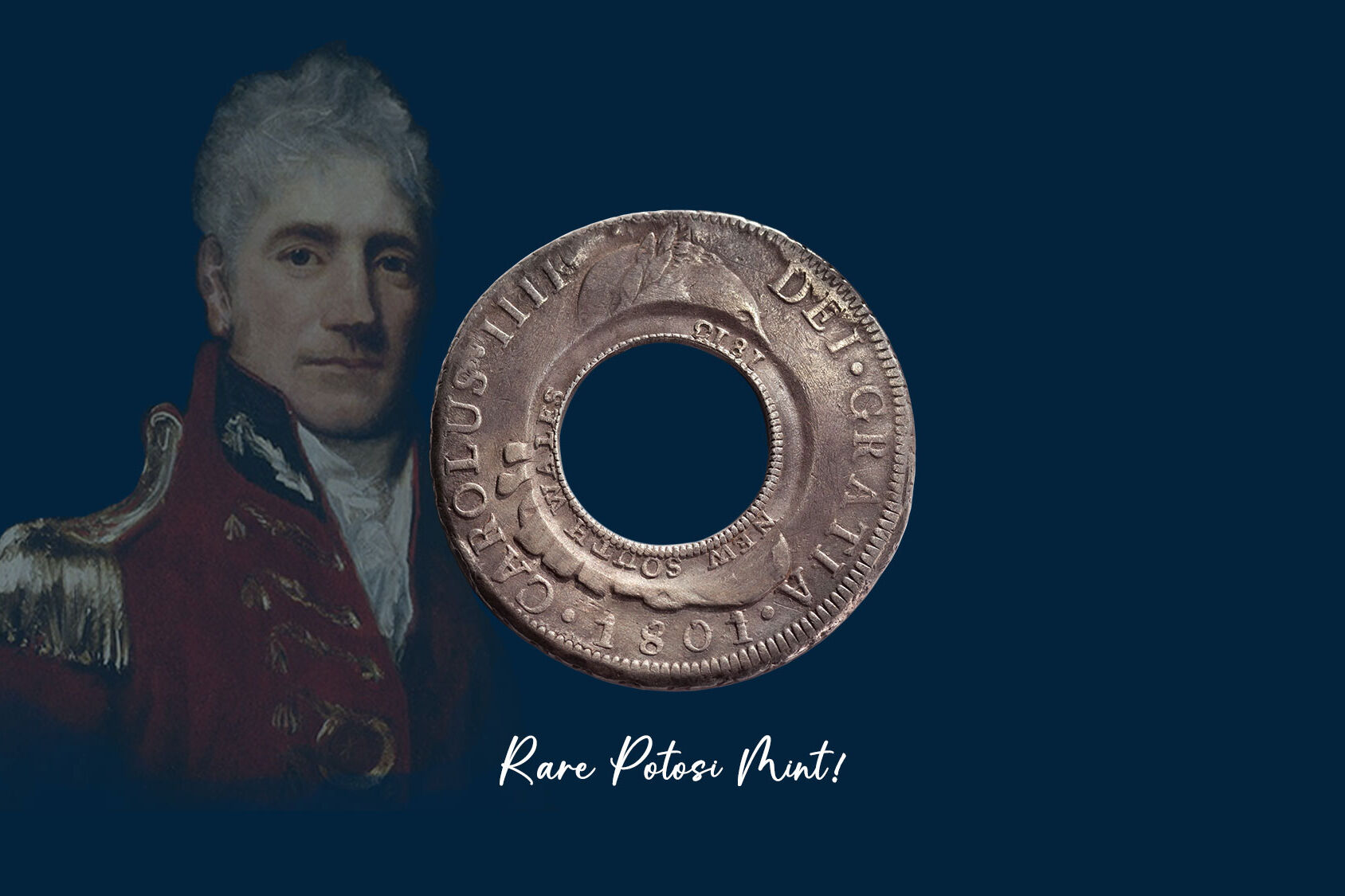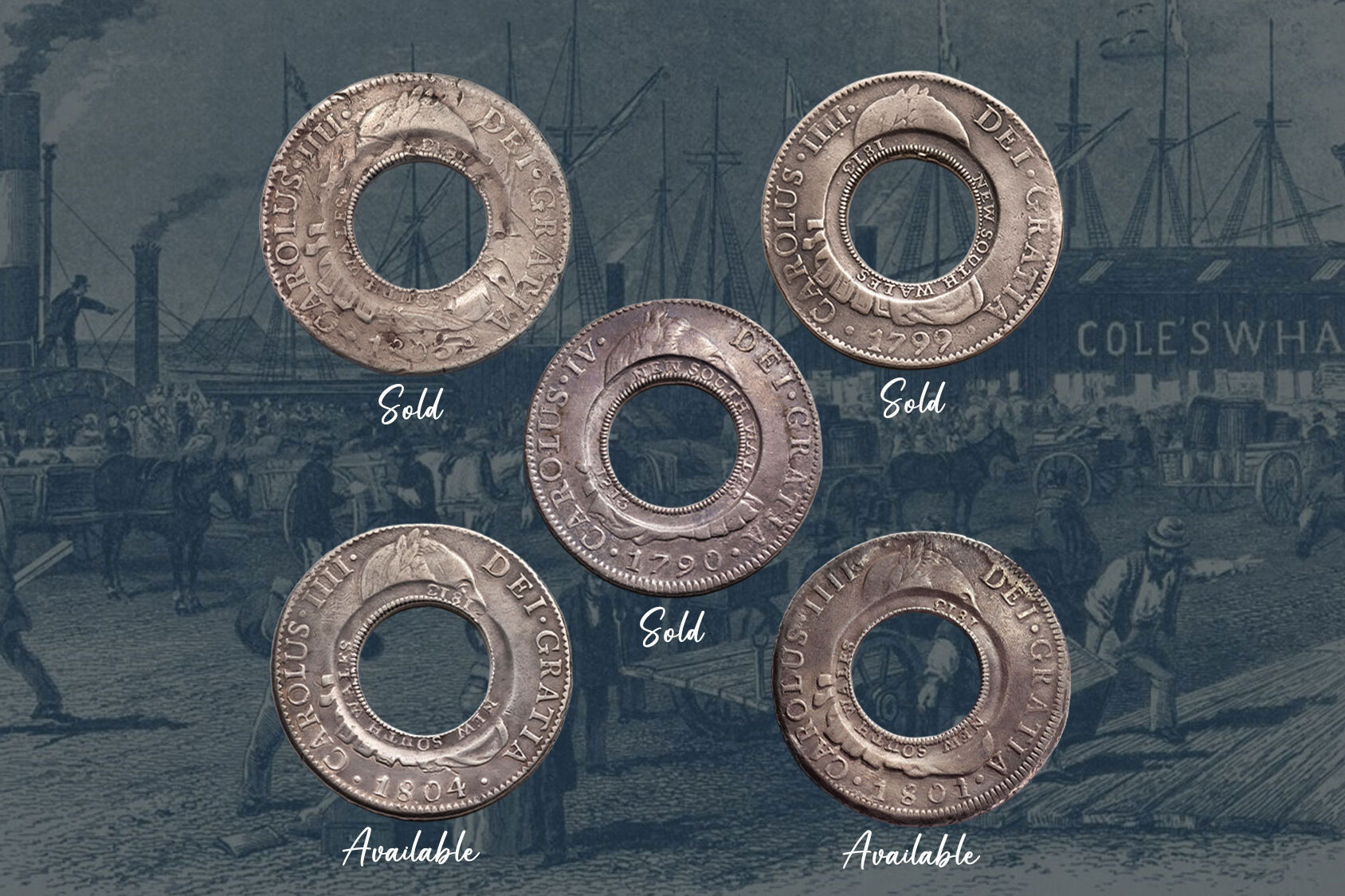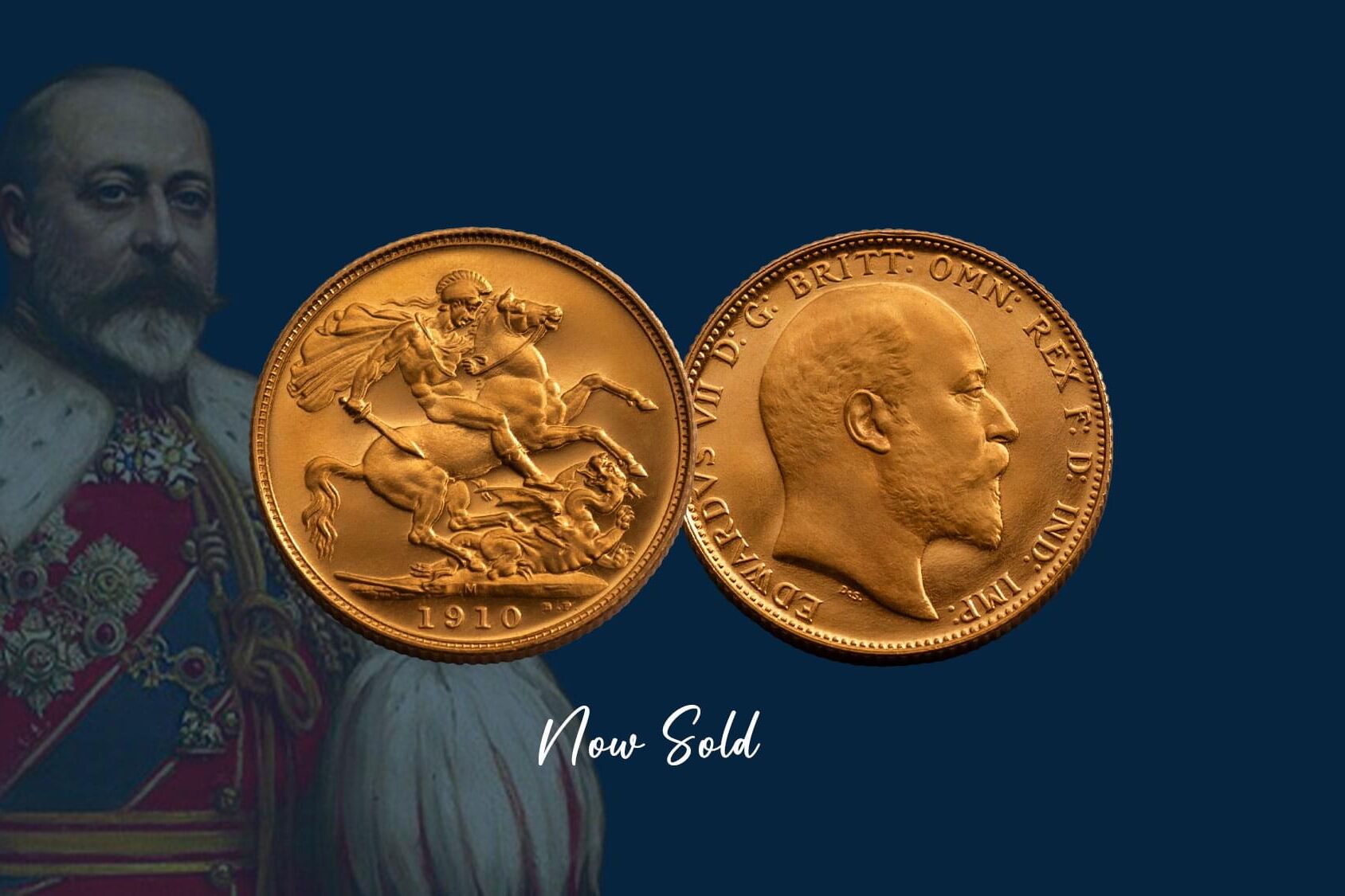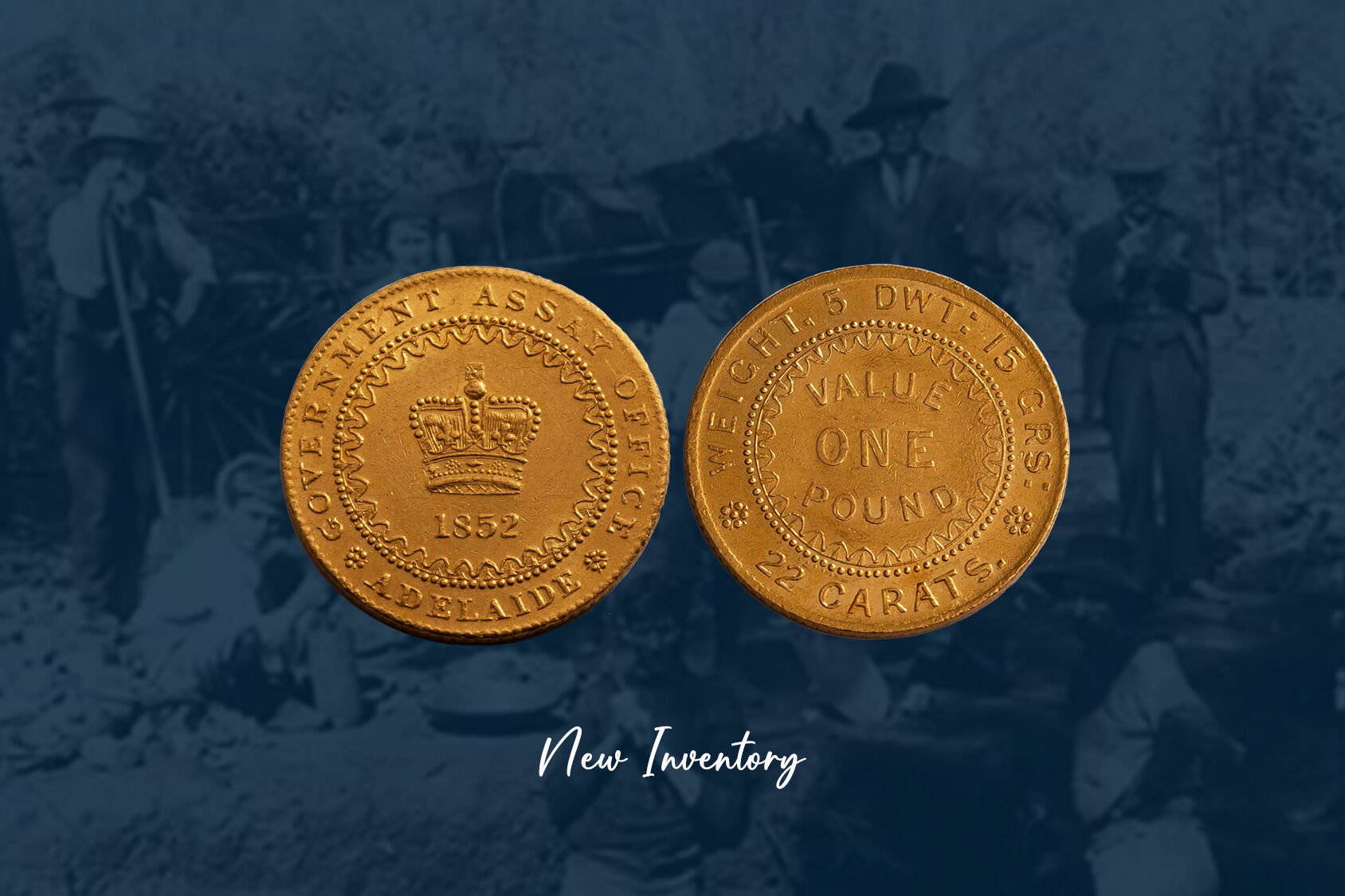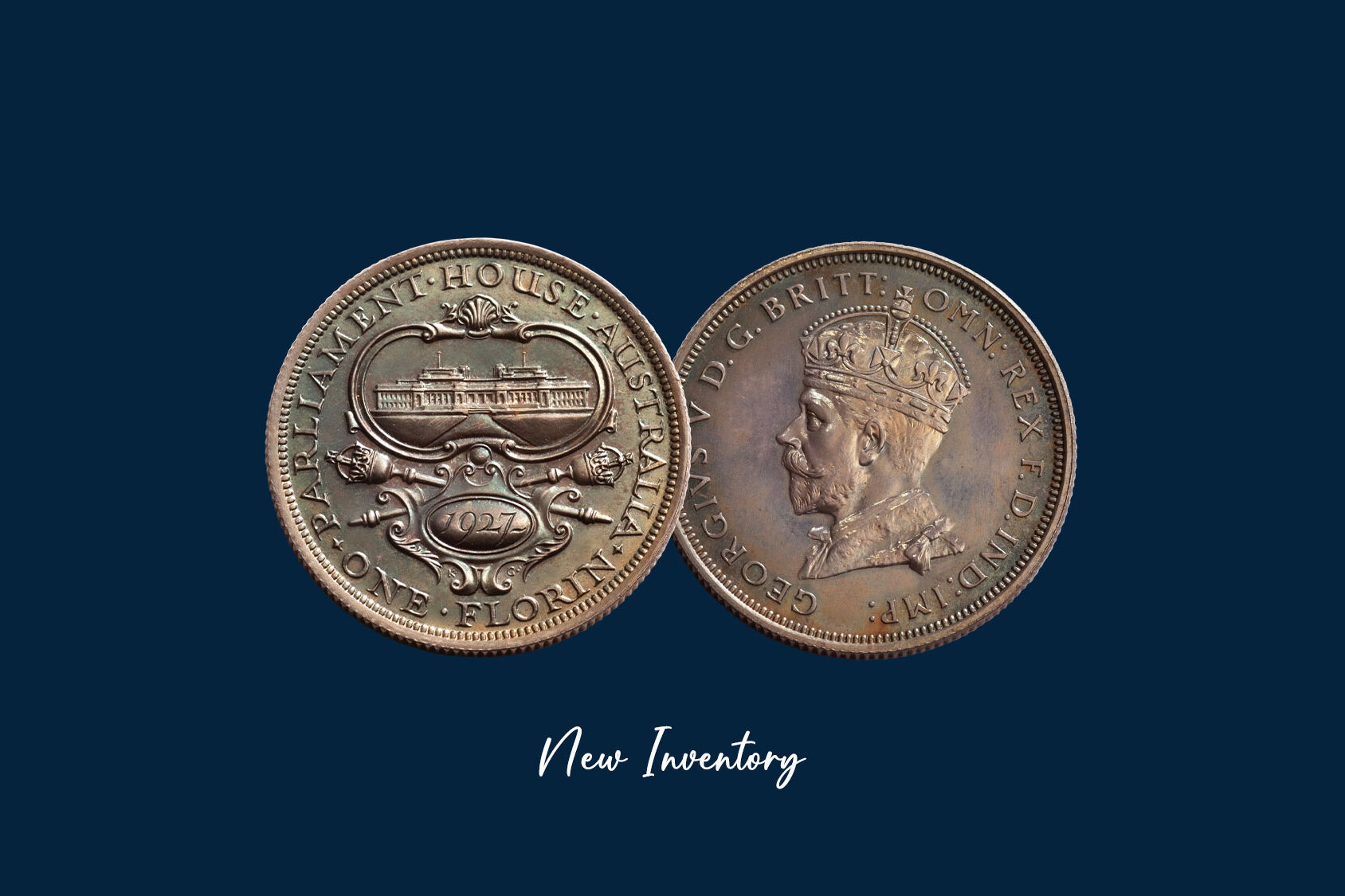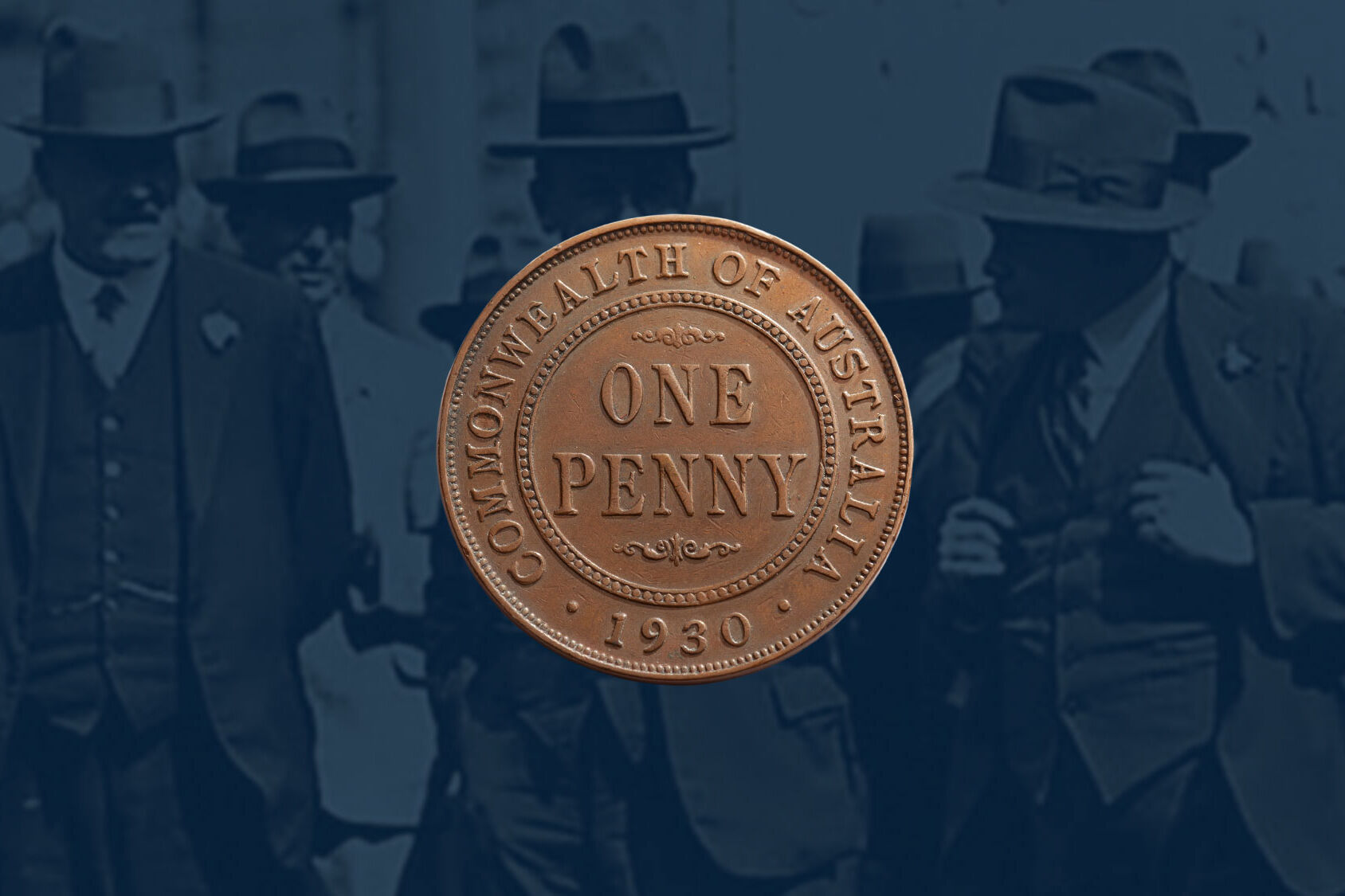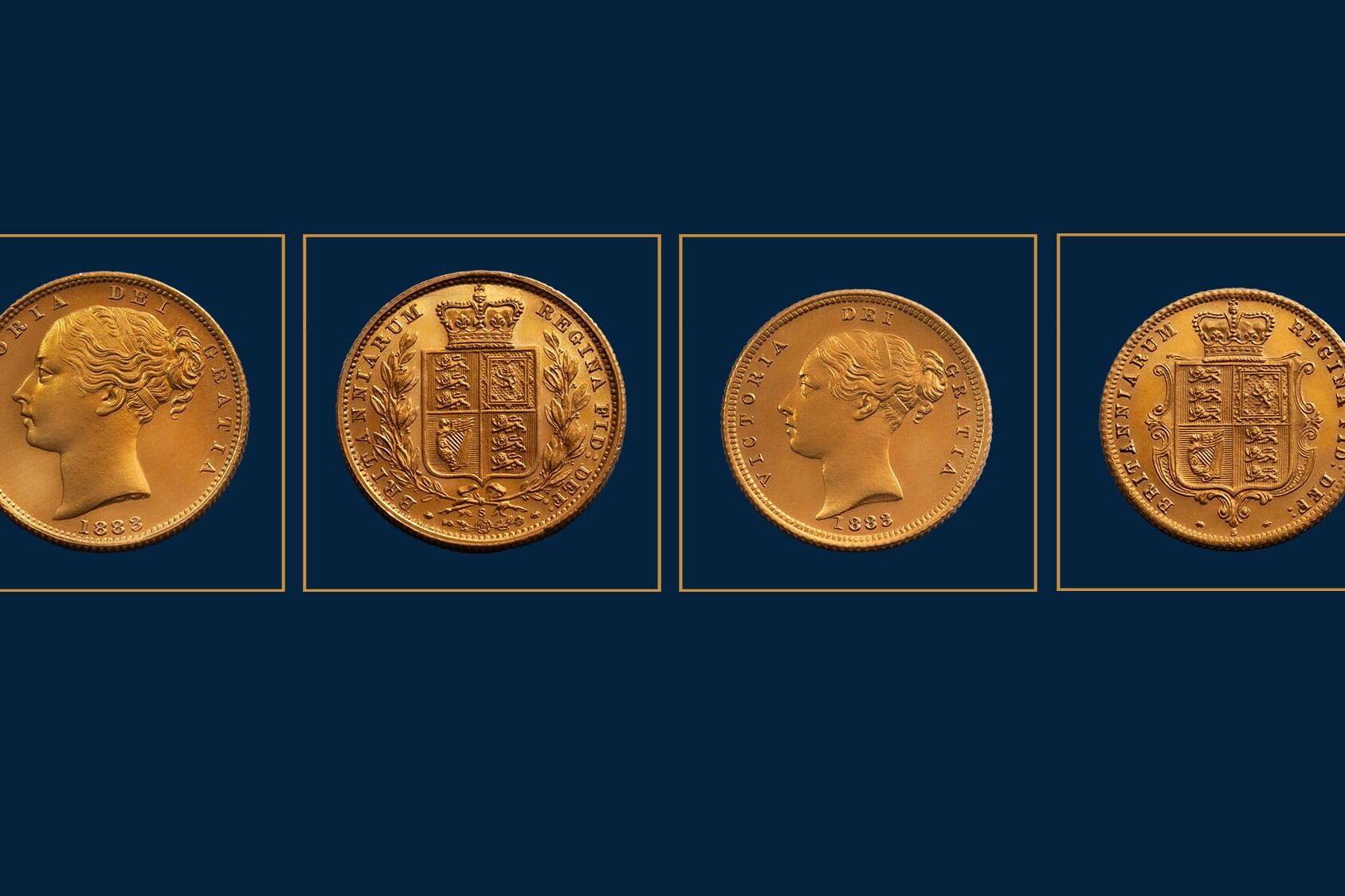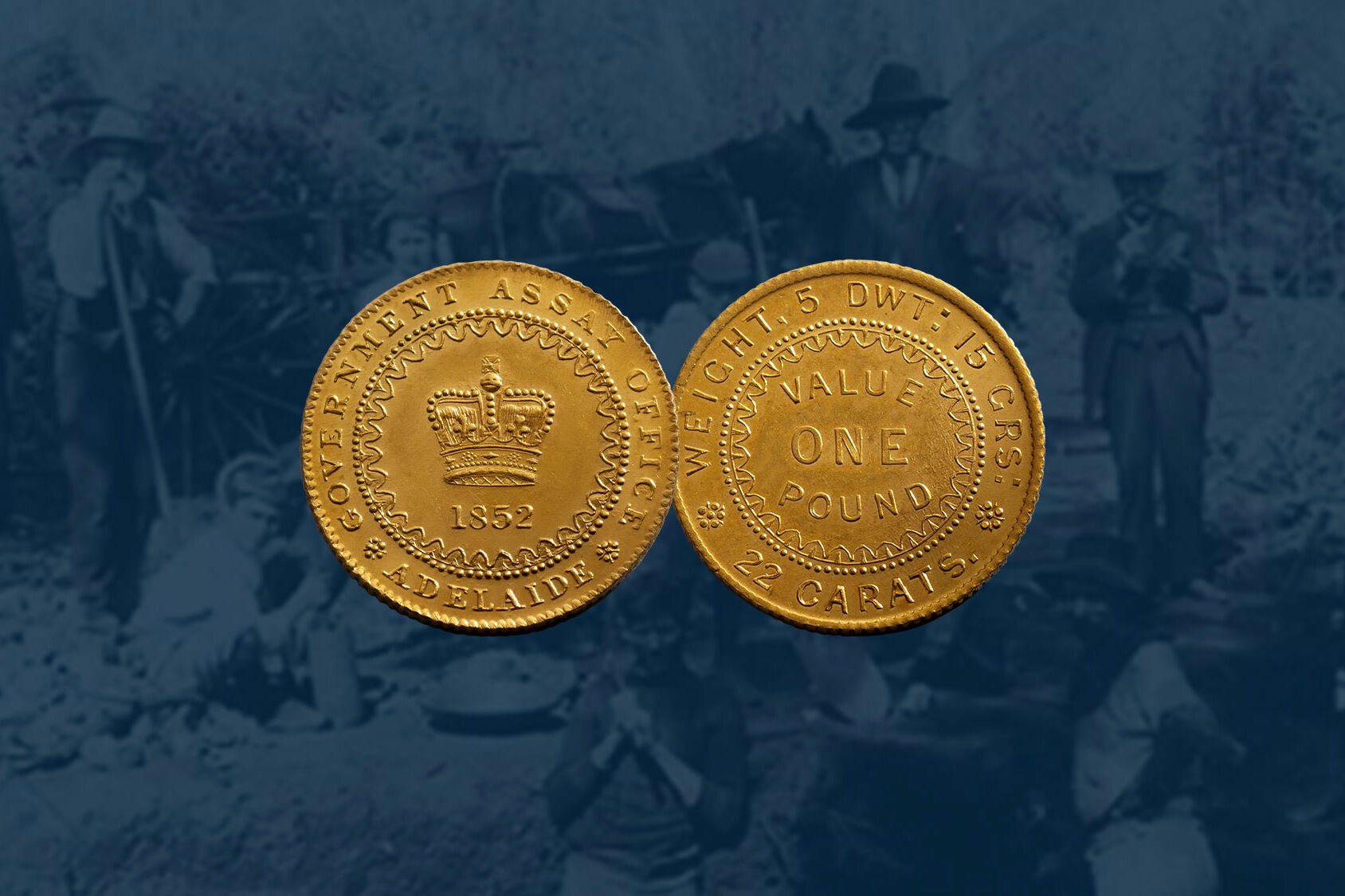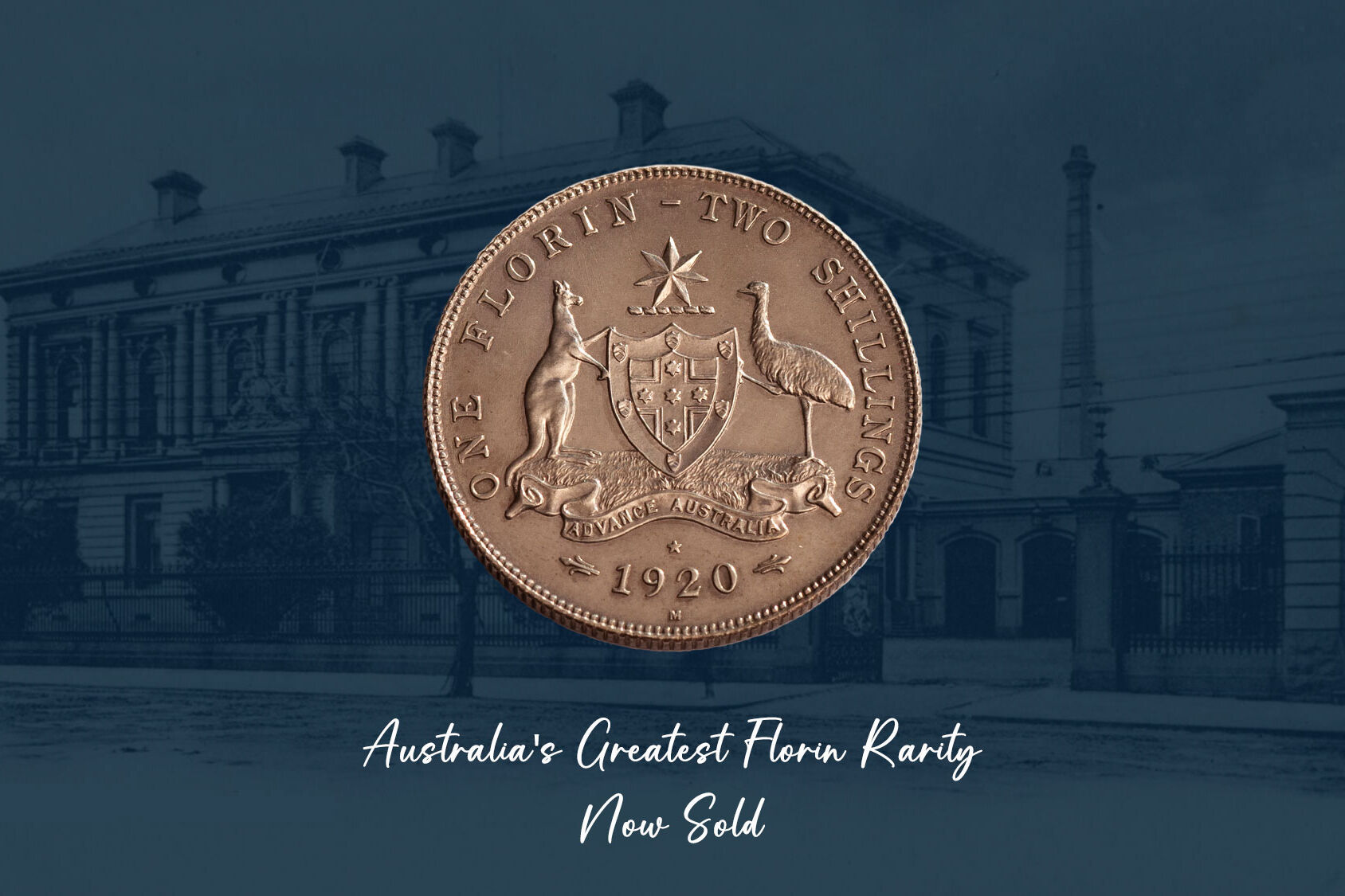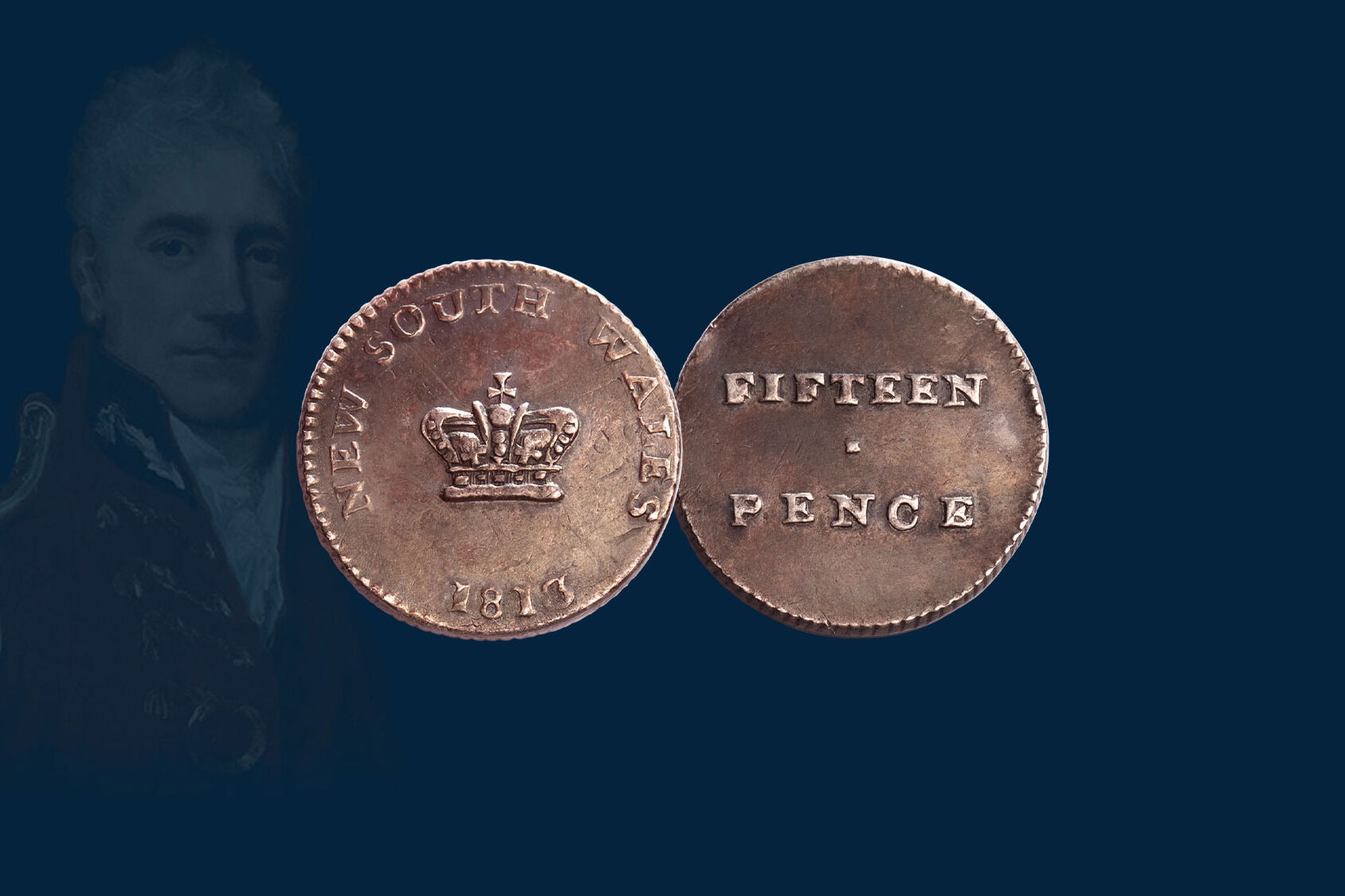Extremely rare Holey Dollar, struck in the British Colony of Dominica
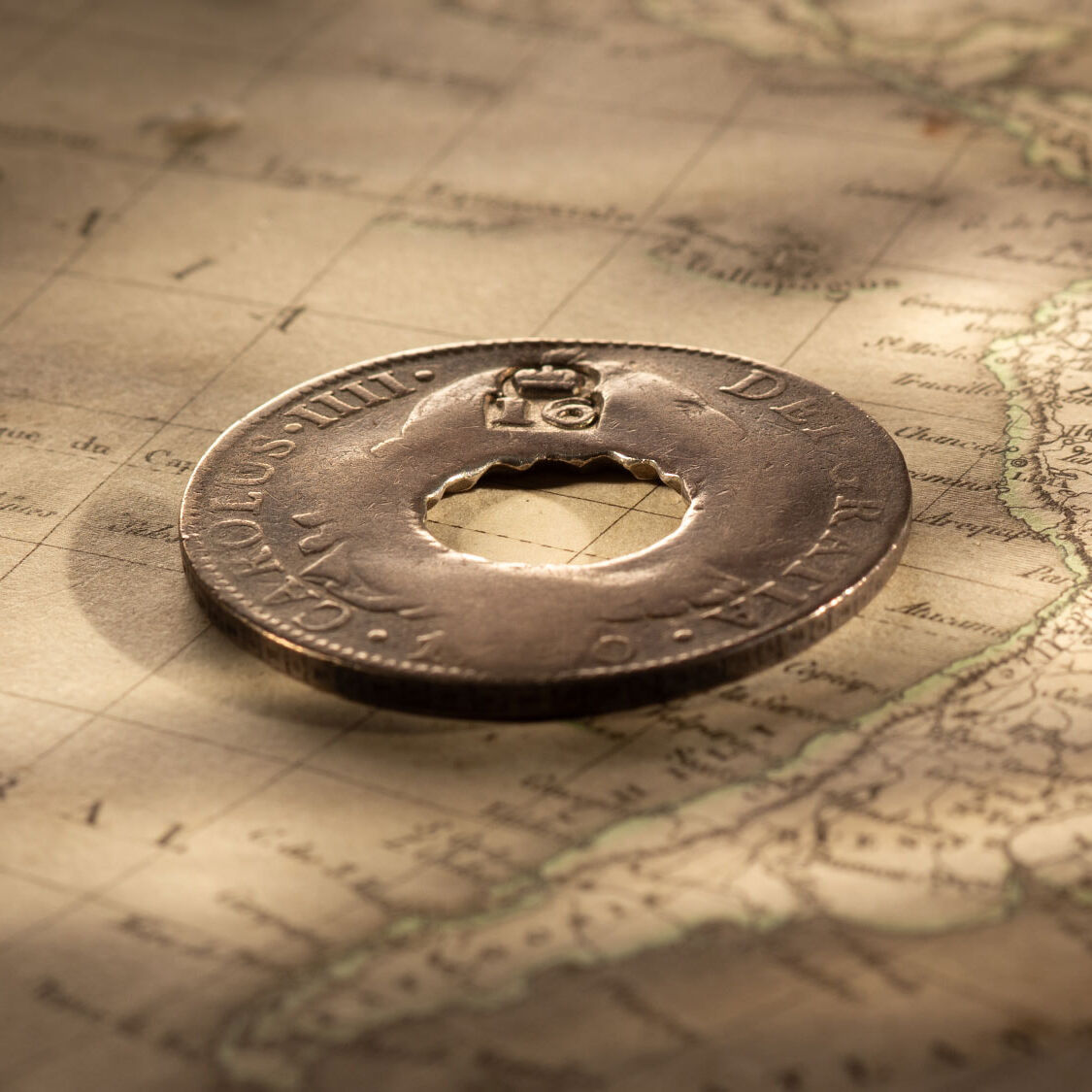
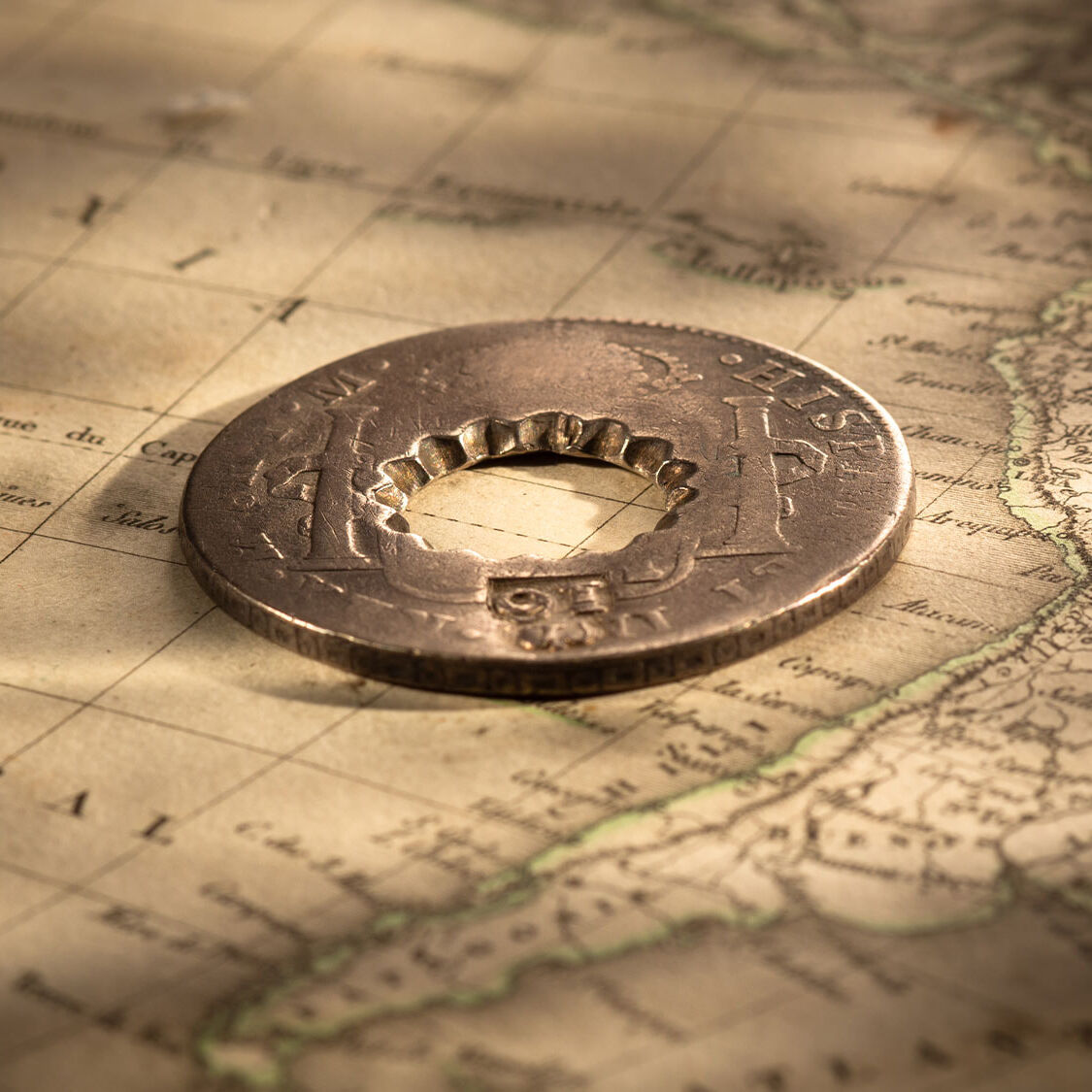
This Holey Dollar was struck in 1813 on a 1790 Mexico Mint Spanish Silver Dollar, pierced from the reverse side with crenellations.
The pierced dollar was then counter stamped on the King’s head and on the reverse with a crowned 16 within a shaped indent. The monetary value was 16 bitts.
The original Spanish Dollar from which it was created features the legend of the reigning monarch Charles IV.
But the twist to this coin is that it features the portrait of the deceased monarch Charles III.
We refer to it as a 'Transitional' Holey Dollar and they are supremely rare.
Transitional Holey Dollars chronicle the limitations of communications in this era. And the challenges of the colonial mints wishing to maintain silver coin production.
Eager to maintain production of silver coins to flow into Spanish coffers, a Royal decree granted the colonial mints the right to continue striking coins with the portrait of the deceased King Charles III.
The legend was however amended to acknowledge the new monarch Charles IV, thereby observing the currency protocols for the passing of a monarch..
By 1791, the mints had received the portrait of the new king; the official portrait of Charles IV appearing on the Spanish Silver Dollars for the first time in that year.
Dominica is a Caribbean Island. First sighted by Christopher Columbus in 1493, later colonized by the French in the 17th century and a British colony one century later.
Between 1642 and 1650, French missionary Raymond Breton became the first regular European visitor to the island.
In 1660, the French and English agreed that Dominica and St. Vincent should not be settled, but left to the Caribs as neutral territory.
But its natural resources attracted expeditions of English and French foresters, who began harvesting timber.
In 1690, the French established their first permanent settlements. French woodcutters from Martinique and Guadeloupe began to set up timber camps to supply the French islands with wood and gradually become permanent settlers.
In 1727, the first French commander, M. Le Grand, took charge of the island with a basic French government; Dominique formally became a colony of France, and the island was divided into districts or "quarters".
Already installed in Martinique and Guadeloupe and cultivating sugarcane, the French gradually developed plantations in Dominica for coffee. They imported so many African slaves to fill the labour demands that the population became predominantly African in ethnicity.
In 1761, during the Seven Years' War in Europe, a British expedition against Dominica led by Andrew Rollo conquered the island along with several other Caribbean islands. In 1763, France ceded the island to Great Britain under the Treaty of Paris.
The same year, the British established a legislative assembly, representing only European colonists. French remained the official language, but Antillean Creole was spoken by most of the population. In 1778 the French, with the active co-operation of the population, began the Invasion of Dominica, which was ended by the 1783 Treaty of Paris. French invasions in 1795 and 1805 ended in failure.
Highlights of our Inventory
© Copyright: Coinworks

